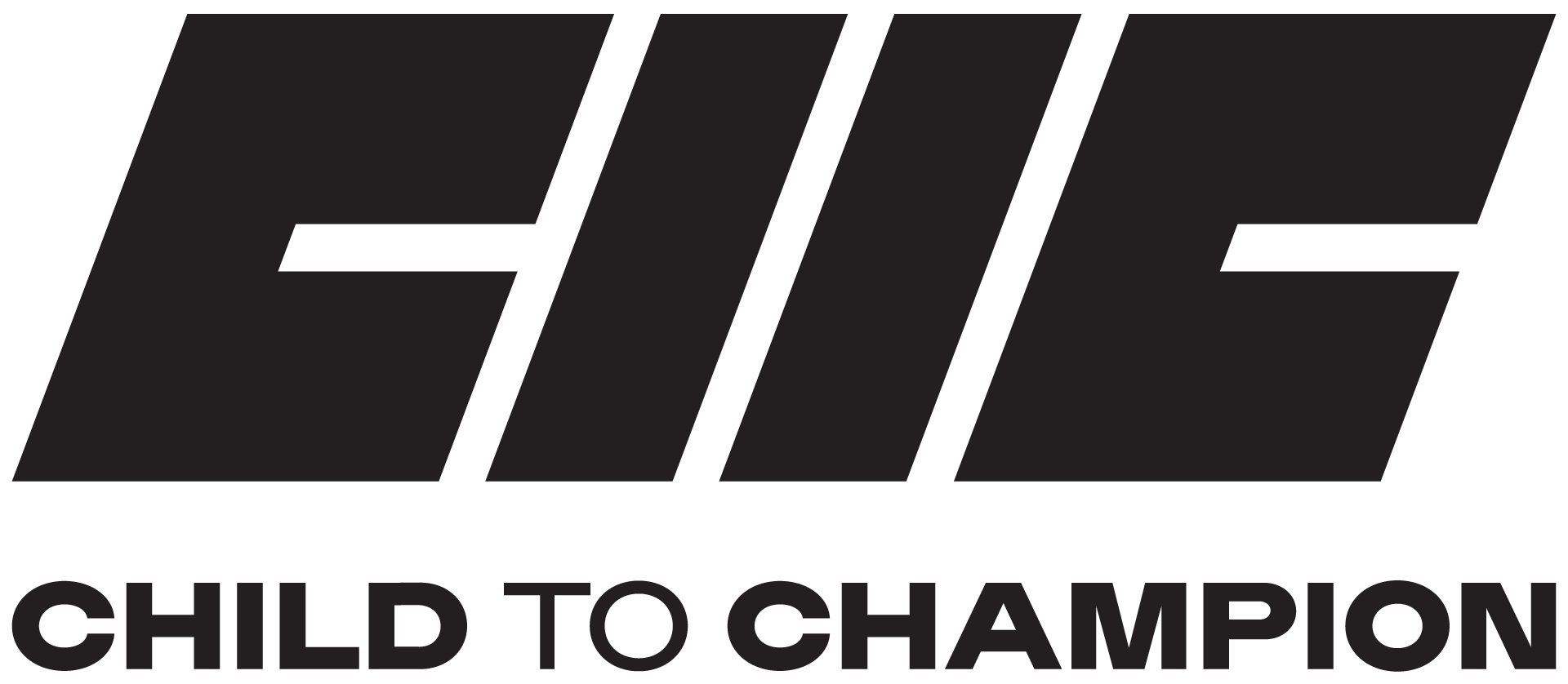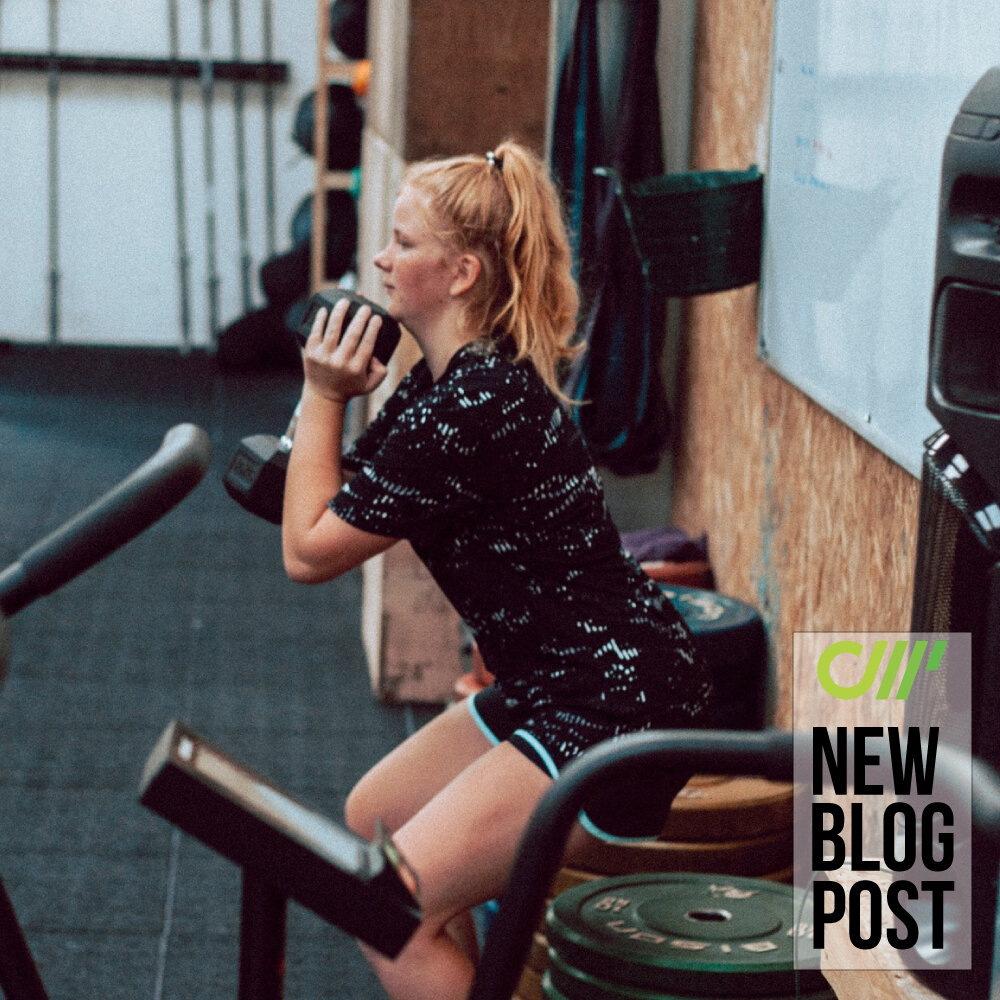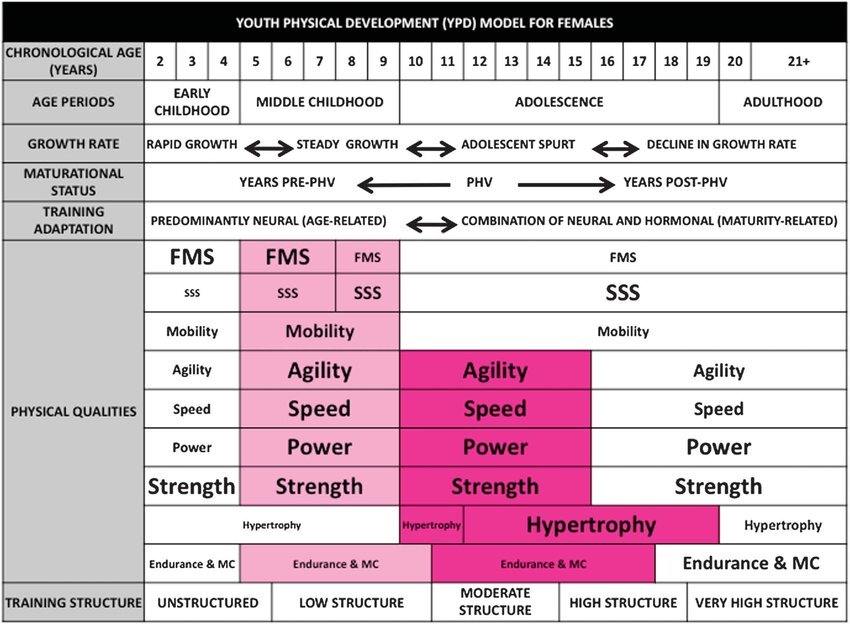Prior to puberty, young girls are physiologically the same as both where strength and conditioning is concerned. As soon as puberty kicks in however, there are specific implications that coaches and parents of youth female athletes need to be aware of.
In this blog you will learn:
-
What changes occur during puberty that warrants considerations where S&C programs are concerned
-
Why (and when) youth female athletes will need specific programming considerations
-
Which types of movement patterns may need particular attention for the youth female athlete
-
When puberty kicks in for the female athlete, from an S&C coach\’s perspective some of the key changes occur:
-
Ligaments increase in laxity (i.e. looseness) (Belanger et al 2013)
-
Quadricep strength increases faster than hamstring strength (Myer 2009)
-
Girls become heavier as fat mass increases (also known as peak weight velocity)
-
Adolescent awkwardness may result as bone growth precedes that of muscle and tendons
So what does this mean for an S&C program?
Firstly, landing mechanics may need revisiting as taller, heavier female athletes may need a period of adjusting to their new frames. (For example regressions of jumping and landing tasks see below, or for a more comprehensive breakdown of plyometrics see the full blog here)
Secondly, exercises which target the posterior chain (the back of the body, think hamstrings, glutes and even the back itself) may require even more of an emphasis as girls go through puberty.
Example posterior chain exercises include, but are not limited to:
-
RDLs
-
Hip thrusts
-
Single leg deadlifts
-
Trap bar deadlifts
Finally, measures of performance that are relative to bodyweight (e.g. VO2 max, power, strength to weight ratio etc) may suffer if the underpinning strength levels do not increase at the same rate as the increase in mass. This is why helping young girls develop control and strength in squatting, lunging and jumping tasks is critical BEFORE their bodies go through the inevitable increase in height and weight.
#block-f65041f174b28e309eb9 {
}
(Lloyd & Oliver 2012)
Effectively, youth female athletes need to move forward on order to stay still where strength to bodyweight ratio is concerned; since it is this strength to bodyweight ratio that will underpin how efficient they are at moving their own bodyweight in their sport.
This is also where an effective working relationship between a youth female athlete and an S&C coach is absolutely crucial.
Without an understanding of what changes occur physiologically as young girls go through during puberty, decreases in strength, power and efficiency (and increases in weight) can be easily misinterpreted if the reasons behind these are not carefully and professionally explained to a youth female athlete.
The subject of male coaches communicating about issues the menstrual cycle, body image and explaining these changes is one that
With wider hips, as the female body prepares for child birth, and looser ligaments, focusing on integrating simple jumping and landing tasks into sports practice and P.E warm ups can help provide the necessary training stimulus to reduce the staggering number of young girls who experience devastating knee injuries such as an ACL, which are up 7 times more likely in young girls vs young boys
On a final note, do not confuse young female athletes having stronger quadricep strength (relative to their hamstring strength) as having strong quads.
To steal an analogy from a former colleague of mine…a toothpick is stronger than a strand of spaghetti…but neither are very strong.
Whilst young female athletes cannot do anything about the hormonal changes which cause their hips to widen, and their weight to increase, they absolutely can (and should) be focusing on increasing their movement quality in squatting, lunging and landing patterns, and prioritising strength of the major muscles of the lower limb.
Key Take Homes:
-
The most accelerated growth spurt (aka peak height velocity) occurs ~18-24 months earlier in youth female athletes…meaning movement and strength training needs to happen earlier to offset the subsequent increases in height and weight.
-
During this growth spurt quadricep strength increases at a faster rate than hamstring strength in girls.
-
Landing and posterior chain exercises might need more of an emphasis in youth female S&C programs.
If you are a parent, sports coach or just someone who wants to understand more about the programming considerations for young female athletes, or you want to find out more about the role that psychosocial factors and the menstrual cycle have on performance of female athletes, check out the additional resources at the bottom of this blog.
References
Belanger, L., Burt, D., Callaghan, J., Clifton, S., & Gleberzon, B. J. (2013). Anterior cruciate ligament laxity related to the menstrual cycle: an updated systematic review of the literature. The Journal of the Canadian Chiropractic Association, 57(1), 76.
Myer, G. D., Ford, K. R., Foss, K. D. B., Liu, C., Nick, T. G., & Hewett, T. E. (2009). The relationship of hamstrings and quadriceps strength to anterior cruciate ligament injury in female athletes. Clinical journal of sport medicine, 19(1), 3-8.
Lloyd, R. S., & Oliver, J. L. (2012). The youth physical development model: A new approach to long-term athletic development. Strength & Conditioning Journal, 34(3), 61-72.
Additional Resources
Programming considerations for the youth female athlete https://platformtoperform.podbean.com/e/considerations-for-the-youth-female-athlete/
The role of psychosocial factors and the menstrual cycle on performance of female athletes https://www.youtube.com/watch?v=ID4tAV-Mj5E&t=11s
About The Author
Todd Davidson is a UKSCA accredited Strength and Conditioning Coach currently undertaking a PGCE through St Mary’s University, with the longer-term aim of introducing athletic development into the national P.E curriculum. Todd\’s current interest on youth athletes was sparked by gaining experience with University, Paralympic and Olympic athletes as part of his internship roles with Durham University, Middlesex County Cricket Club and the English Institute for Sport, with GB Boxing and Paralympic Table Tennis, and speaking to other practitioners as to how this journey can be scaled more effectively to reduce injury risk, enhance performance and improve athletic development in youth athletes.
Todd can be found via:
Twitter: @todddavidson93
Facebook: search Todd Davidson P2P coaching
Instagram: @ToddDavidsonP2Pcoaching
#block-yui_3_17_2_1_1575477537795_5870 {
}


